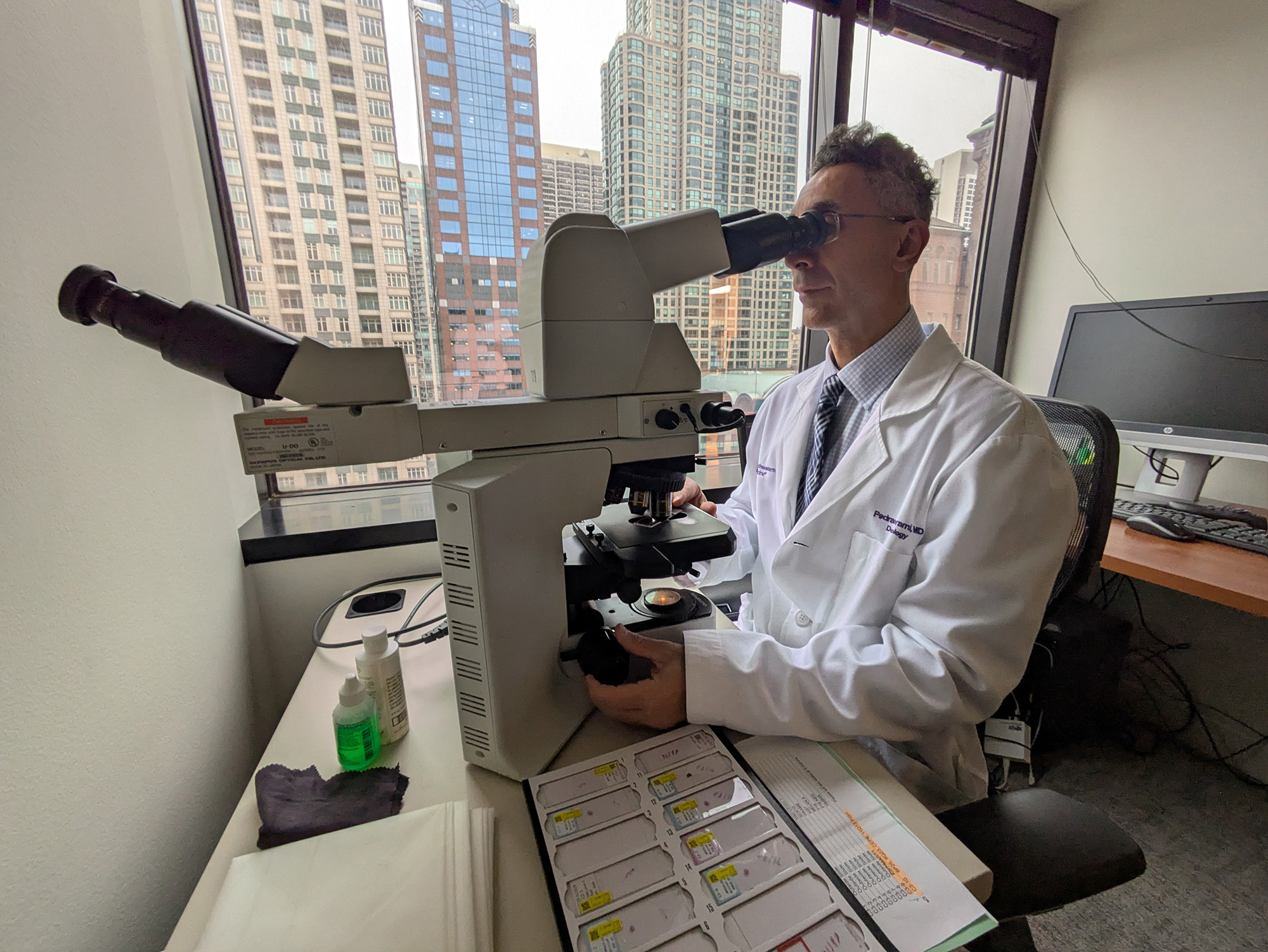
For years, scientists have endeavored to understand the role of histone-modifying enzymes in developmental regulation and how they impact diseases such as cancer. A series of recent discoveries from the laboratory of Ali Shilatifard, PhD, the Robert Francis Furchgott Professor and chair of Biochemistry and Molecular Genetics, point to a new, more nuanced understanding of how epigenetic regulators function.
Previously, histone-modifying enzymes were believed to regulate transcription, but mounting evidence that non-catalytic activity plays a large role will require a shift in thinking for geneticists and scientists, according to Marc Morgan, DPhil, research assistant professor of Biochemistry and Molecular Genetics and lead author of a perspective piece published in Nature Genetics.
“Understanding the catalytic and non-catalytic functions of chromatin regulators is absolutely essential for developing targeted therapies for cancer and other diseases associated with disrupted chromatin function,” Morgan said.
The rise of CRISPR-Cas9 editing has allowed scientists to generate complex experimental models in mammalian cells, where they were previously limited to simple model systems such as yeast. Creating models with catalytically inactive epigenetic regulatory proteins has revealed that these proteins’ primary function may not be tied to enzyme catalysis at all, according to Morgan.
Learning more about these non-catalytic functions may lead scientists to more effective mechanisms that can help mitigate the effects of these cancer-causing mutations, or even repair them.
“The big questions now are: What is the precise molecular consequences of these chromatin regulator mutations? Are these molecular changes reversible with small molecules and does reversing them translate into an effective cancer therapy?” Morgan said. “Before taking the huge leap into developing a targeted small molecule, it’s crucial to understand which functional domains are most relevant in human disease.”
Steering Leukemia Research in the Right Direction

Northwestern Medicine scientists have discovered a previously unknown function of the epigenetic regulator DOT1L, according to a study published in Proceedings of the National Academy of the Sciences.
This study, along with another recent study from the Shilatifard laboratory published in Genes and Development, add to the growing body of evidence that some forms of epigenetic regulation occur without catalytic activity.
DOT1L is strongly implicated in pathogenesis of leukemias, and many investigators have developed catalytic inhibitors against DOT1L as a bid for treatment. However, this new understanding of gene regulation demonstrates that alternative mechanisms should be used to treat DOT1L-dependent leukemia, according to Shilatifard, who was senior author the study.
“Through these recent studies, we have learned that there are functions independent of the post-translational modification of histones that are traditionally associated with these enzymes,” said Shilatifard, also a professor of Pediatrics, director of the Simpson Querrey Institute for Epigenetics and leader of the Cancer Epigenetics & Nuclear Dynamics Research Program at the Robert H. Lurie Comprehensive Cancer Center of Northwestern University. “This has opened up a new area for us to figure out exactly how these enzymes are required in development and how their mutations are associated with cancer.”
This study was led by Kai Cao, PhD, former postdoctoral fellow in the Shilatifard laboratory and now an assistant professor of Biochemistry at Case Western Reserve University.
In mammals, actively transcribed genes are marked by various types of histone methylation, including H3K79 methylation, which is catalyzed by DOT1L.
Previous studies had shown DOT1L was essential for development: if the regulator is genetically deleted, progenitor cells fail to form. However, the current study is among the first to disentangle the catalytic reactions of the regulator from the regulator itself.
In the current study, Shilatifard and his collaborators used CRISPR-Cas9 editing to create two different cell lines. One cell line had mutant DOT1L that was catalytically inactive, while the other cell line lacked DOT1L proteins altogether.
As found previously, cells lacking DOT1L featured a variety of defects and often did not develop properly. However, the cell lines where DOT1L were merely catalytically inactive survived — indicating that the importance of DOT1L may lie outside its enzyme activity.
Importantly, transcription errors are seen in the cells lacking DOT1L, but not the catalytically inactive cells — revealing that DOT1L’s role in gene transcription acts through some other mechanism, according to Shilatifard.
“It could be protein-protein interactions, it could be through protein stability, it could modulate other enzymes,” Shilatifard said. “We don’t know yet, but we do know that they have functions besides their histone-modifying activity.”
Mutations in histone methylation are known to cause cancer, and inhibiting DOT1L to tamp down on rampant cell proliferation has been extensively studied for cancer therapy. Many of those experimental therapies work by inhibiting the catalytic functions of DOT1L, but this study shows that strategy may be off the mark, Shilatifard said.
“If you want to develop a drug to treat cancer through DOT1L, you probably need to degrade DOT1L, not just inhibit its activity,” Shilatifard said.
Co-authors of the study include Feng Yue, PhD, the Duane and Susan Burnham Professor of Molecular Medicine, associate professor of Biochemistry and Molecular Genetics, of Pathology and director of the Center for Cancer Genomics at the Robert H. Lurie Comprehensive Cancer Center of Northwestern University; Edwin Smith, PhD, research professor of Biochemistry and Molecular Genetics; Lihua Zou, PhD, assistant professor of Biochemistry and Molecular Genetics; and Lu Wang, PhD, assistant professor of Biochemistry and Molecular Genetics.
Zou and Wang are members of the Lurie Cancer Center.
This study was supported in part by National Cancer Institute grants R01CA214035 and R35CA197569.






